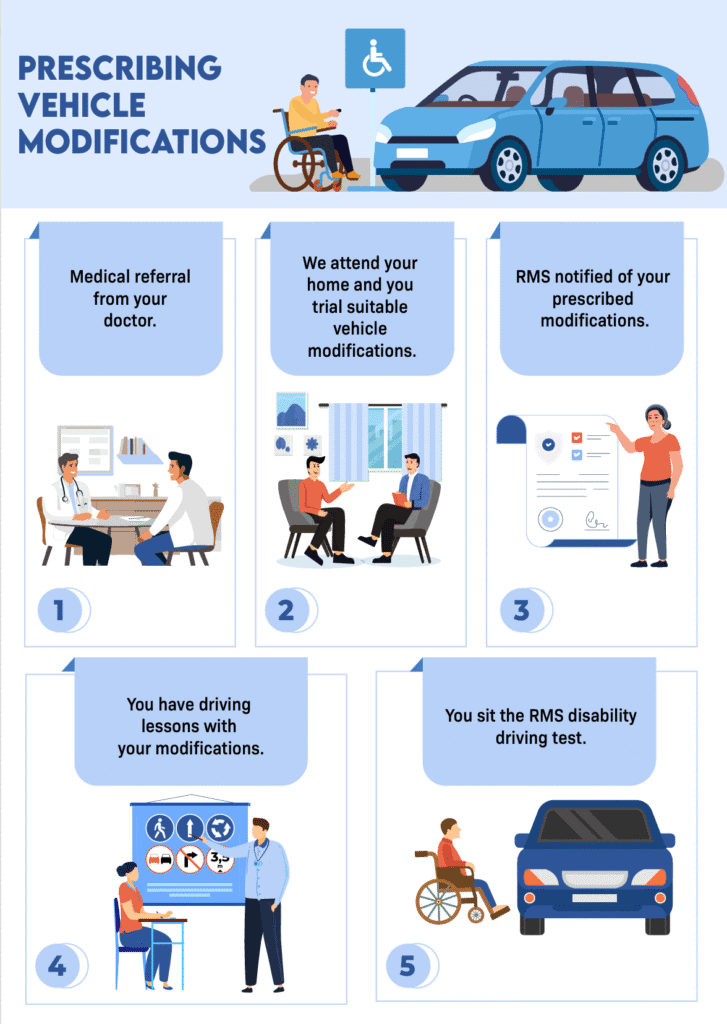Driving is an essential aspect of daily living for many people, and any disruption to one’s opportunity to drive often has considerable effects on their life. Suffering a spinal cord injury is a situation that often questions a person’s driving capacity. Challenges with mobility, sensation, and physical function may limit someone’s ability to use a standard vehicle, but driving is rarely “off the table” altogether. With advances in adaptive technology and comprehensive occupational therapy (OT) driving assessments, many people with spinal cord injuries can once again enjoy the open road.
Understanding Spinal Cord Injuries and Driving
A spinal cord injury (SCI) can vary significantly depending on the level of injury and whether it is complete or incomplete. Some individuals have reduced sensation or weakness in their legs, while others may experience paralysis below the waist or reduced function in the arms and hands. These changes affect one’s ability to operate foot pedals, steer, or use other vehicle controls such as indicators to legal standards.
Driving after an SCI is not just about physical recovery—it’s about learning to adapt. New techniques, modified vehicles, and tailored training mean that people with spinal cord injuries can be safe, confident drivers. This is why the OT driving assessment plays a crucial role in determining if an individual can safely and legally continue to drive after such injuries.
What Is an OT Driving Assessment?
An OT driving assessment is a specialised evaluation conducted by an occupational therapist specialising in driver rehabilitation. It goes beyond a standard driving test and focuses on the person’s medical situation, functional abilities, and safety needs.
The assessment typically involves two key components:
- Off‑Road Assessment
The OT reviews medical history, driving history, vision, cognition, and physical condition (e.g. reaction times, muscle strength, coordination, and range of motion). They also discuss their driving goals. For someone with an SCI, they will assess upper body control, grip strength, and the ability to transfer into and out of a vehicle. - On‑Road Assessment
The second stage occurs in a driving instructor’s vehicle, fitted with a dual brake. People with SCI histories, adaptive controls are also often installed such as hand controls. The person may trial different types of vehicle modifications and choose the controls that best suit them - Afterward, the OT provides recommendations that could include adaptive equipment (including wheelchair accessibility needs), or further training.
Vehicle modifications for SCI
For people with spinal cord injuries, vehicles can be customised with a wide range of technology. Depending on the injury level and functional abilities, recommended modifications may include:
- Hand controls: Allow the accelerator and brake to be operated with the hands instead of the feet.
- Spinner knobs or joystick steering: Make steering easier for people with limited grip or arm movement.
- Power transfer seats: Facilitate transferring from a wheelchair to the driver’s seat.
- Wheelchair lifts or ramps: Ensure easy access to the vehicle.
- Voice‑activated or touch‑pad secondary controls: Operate lights, indicators, or windscreen wipers without needing to reach traditional switches.
The goal of this technology is not just to enable driving but to ensure that the driver remains safe, comfortable, and confident. All modifications that are recommended must meet Australian standards, and the OT liaises with certified vehicle modifiers when the time comes to install the equipment into the person’s vehicle.
Why Occupational Therapy Plays Such a Vital Role
Driving is a complex activity that demands simultaneous physical, cognitive, and visual skills. Occupational therapists bring a unique perspective because they are trained to look at how health conditions impact daily life and community participation. In the case of an SCI, they are skilled at identifying strengths, limitations, and practical workarounds.
Importantly, OTs consider the person’s goals. Driving might be about commuting to work, taking children to school, or simply enjoying road trips again. Whatever the purpose, the OT tailors the assessment and training plan to help the individual achieve as much independence as possible. In NSW, the OT driving assessment an important evaluation tool endorsed by Transport NSW to determine how medical conditions impact on driving ability. In SCI cases in particular, OTs have the pivotal role of legally prescribing necessary vehicle modifications on a person’s driver’s licence.
The Benefits of Returning to Driving
For someone living with a spinal cord injury, being able to drive again can be transformative. It can:
- Enhance independence: Reducing reliance on family, carers, or public transport.
- Improve quality of life: Enabling participation in social activities, hobbies, and spontaneous outings.
- Support employment and education: Opening pathways to returning to work or study.
- Boost confidence: Restoring a sense of normalcy and control after life‑changing injury.
Beyond the spinal cord injury
Recovering from a spinal cord injury is a journey filled with challenges, adaptations, and new beginnings. The OT driving assessment is one step along the way—a bridge that connects rehabilitation with independence. It reassures families that safety is prioritised while empowering the individual to adjust to life after their injury. With the right support, driving is often possible following a spinal cord injury.


